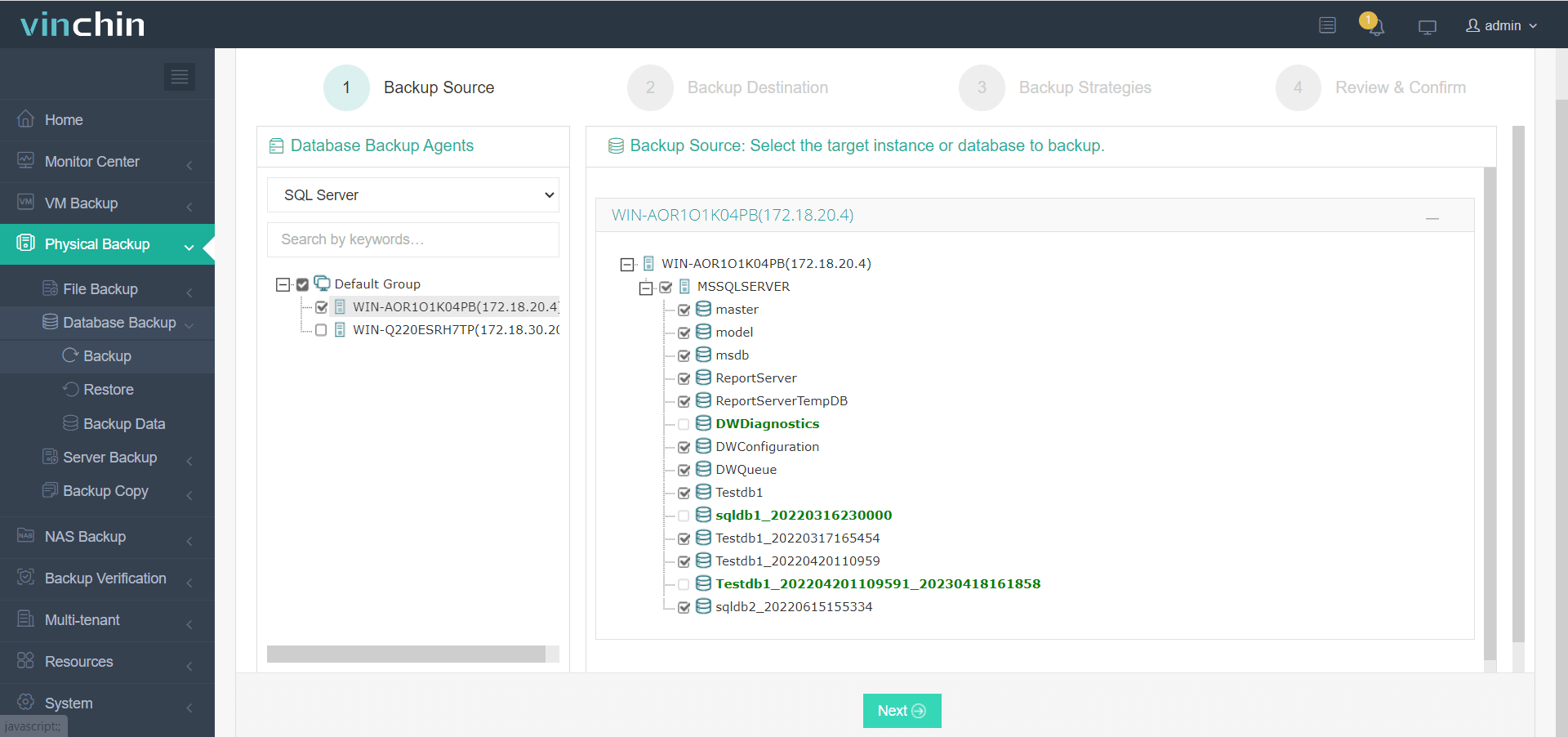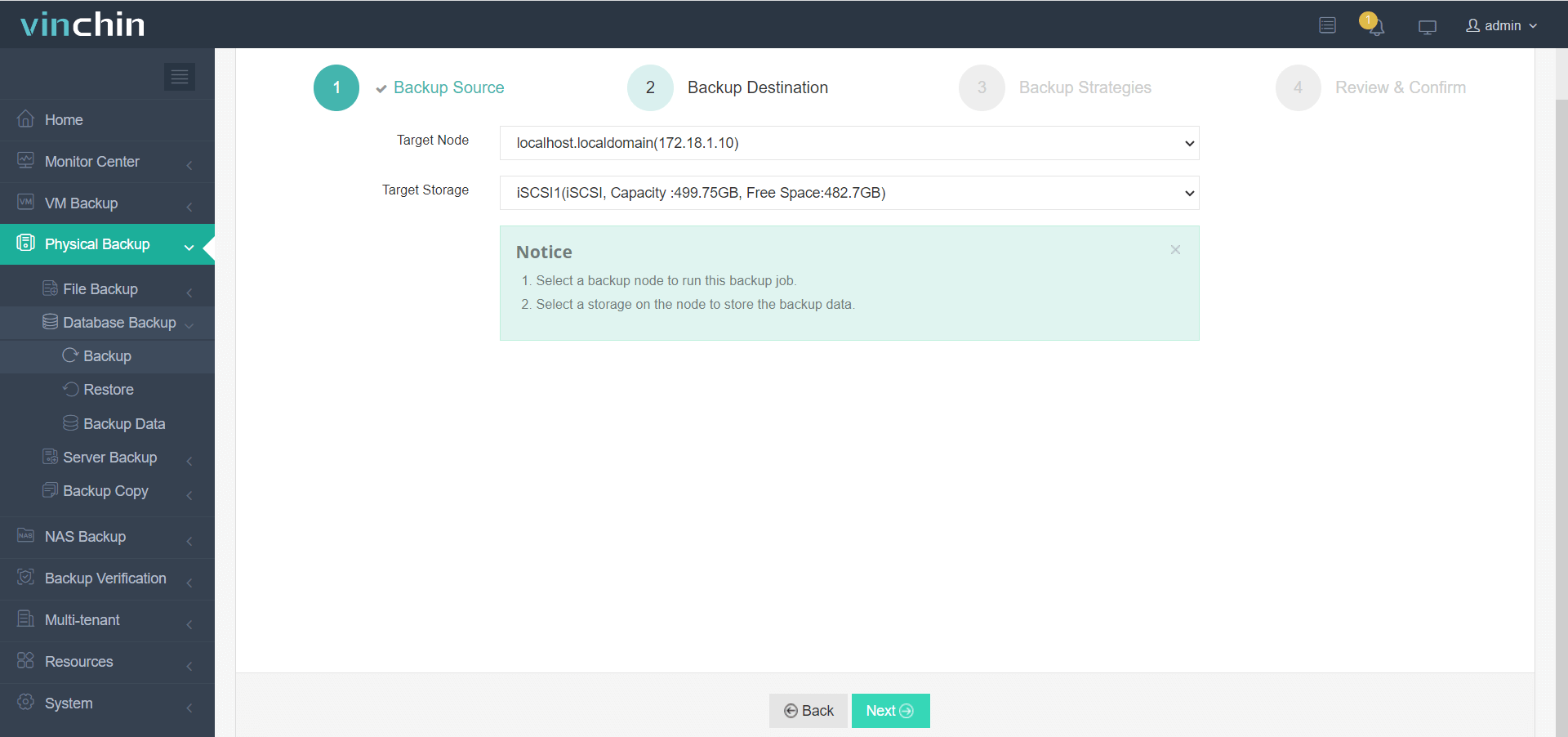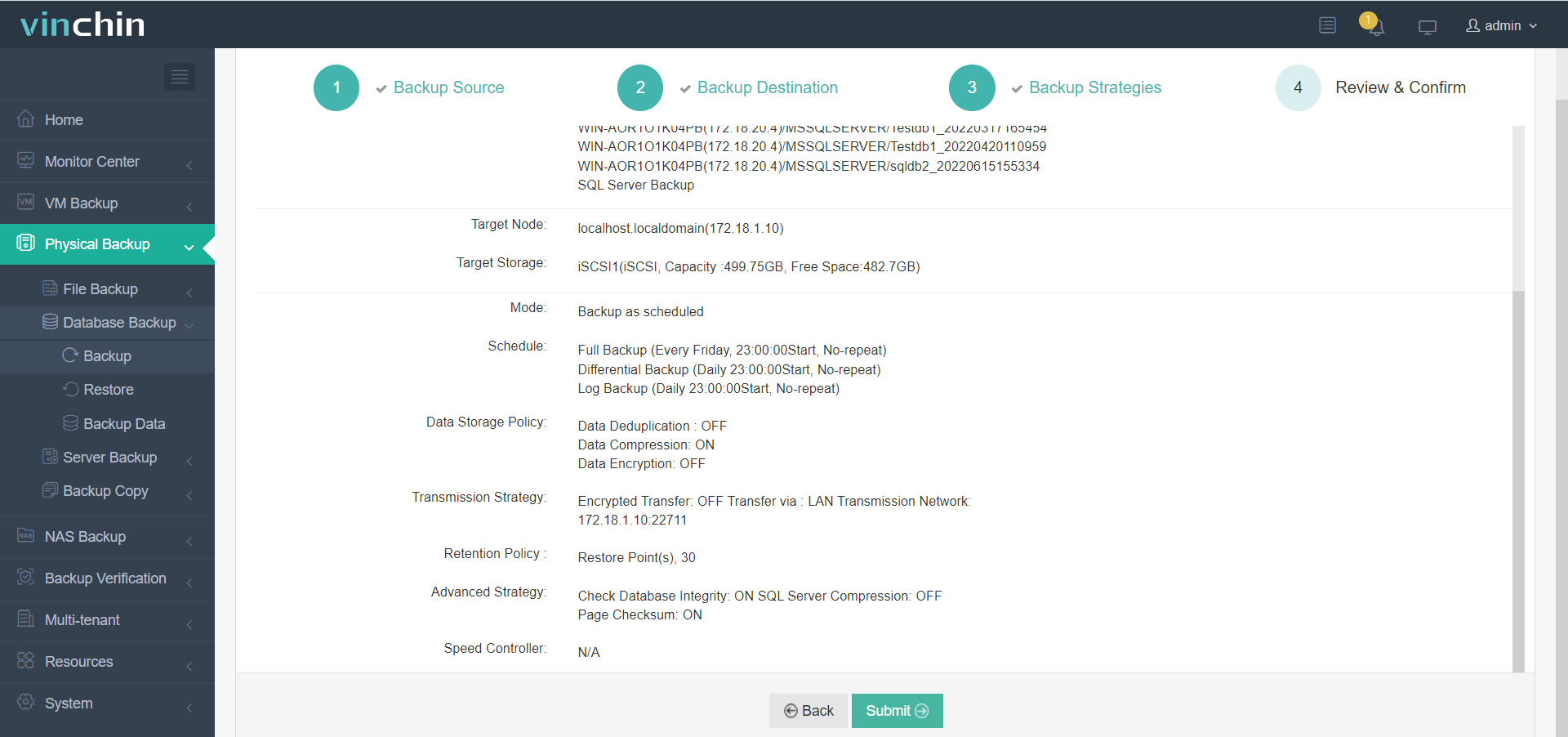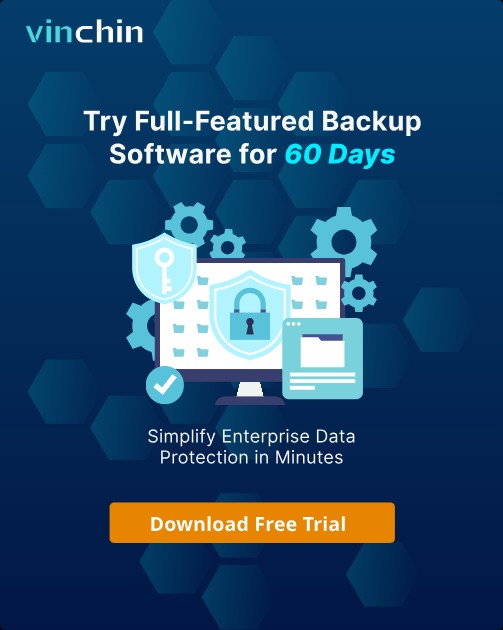-
What is SQL Server?
-
What is Active-Active Clustering in SQL Server?
-
Advantages of SQL Server Active-Active Clustering
-
Disadvantages of SQL Server Active-Active Clustering
-
Active–Active vs Active–Passive Clustering in SQL Server
-
How To Set Up an Active–Active SQL Server Cluster?
-
Vinchin: Enterprise-Level Database Backup Made Simple
-
FAQs about SQL Server Active–Active Clusters
-
Conclusion
High availability means keeping your databases online no matter what happens—hardware failure, software bugs, or planned maintenance. For many businesses, downtime can mean lost revenue or damaged reputation. That’s why clustering is so important in SQL Server environments. But what does “active-active” clustering really mean? How does it work? Is it right for your needs? In this guide, we’ll explain everything you need to know about SQL Server active-active clusters.
What is SQL Server?
SQL Server is Microsoft’s main relational database management system (RDBMS). It stores data in tables that applications can read or write using queries. You’ll find SQL Server running business apps, websites, analytics platforms—anywhere reliable data storage matters.
SQL Server supports both Windows and Linux operating systems but most high-availability features are built around Windows environments. There are several editions—Standard and Enterprise being most common for clusters—with different capabilities for failover clustering support.
You can run SQL Server as a single instance on one server or as part of a cluster where multiple servers (called nodes) work together to keep databases available even if one node fails.
What is Active-Active Clustering in SQL Server?
Active-active clustering lets two or more nodes in a cluster each run their own independent SQL Server instance at the same time. Each node serves client requests directly—so all hardware gets used instead of sitting idle.
It’s important to clear up a common misunderstanding: in SQL Server clusters, “active-active” never means two nodes serve the same database at once. Instead:
Node 1 runs Instance A (with Database A)
Node 2 runs Instance B (with Database B)
If Node 1 fails, Instance A moves over to Node 2—which then temporarily runs both instances until Node 1 comes back online.
This setup maximizes hardware use while still providing failover protection—but requires careful planning so any one node can handle both workloads during an outage.
Windows Server Failover Clustering forms the backbone of most high-availability solutions for SQL Server on Windows platforms. WSFC manages communication between nodes using heartbeat signals and coordinates which node owns each clustered resource at any time.
Each cluster has its own configuration database called the quorum—which helps decide who should take over if there’s ever a split-brain scenario (when network problems make nodes lose contact).
Advantages of SQL Server Active-Active Clustering
Active-active clustering offers several benefits that appeal to organizations seeking efficiency alongside high availability.
First off—it makes full use of your investment by letting every node handle production traffic instead of leaving half your servers idle waiting for failures.
Both nodes actively serve different workloads at all times; this approach reduces wasted capacity compared with traditional active-passive setups where only one server works while another waits just in case something goes wrong.
Other key advantages include:
High Availability: If one node fails unexpectedly—or needs maintenance—its workload shifts automatically so users see little disruption.
Resource Utilization: No more expensive hardware sitting unused; every server earns its keep.
Load Distribution: Assign heavy reporting jobs to one instance while OLTP transactions run elsewhere—keeping performance smooth across applications.
Maintenance Flexibility: Patch operating systems or upgrade software on one node without taking down all services; simply move workloads temporarily then switch back when done.
Workload Segmentation: Isolate sensitive apps from noisy neighbors by giving them dedicated instances within the same cluster framework.
For organizations running multiple independent databases—or needing strict separation between workloads—active-active delivers strong value when sized correctly.
Disadvantages of SQL Server Active-Active Clustering
While powerful, active-active clustering brings extra complexity compared with simpler models—and requires careful planning around resources and licensing costs.
Here are some challenges you may face:
Resource Contention: If both instances end up running together after failover (planned or unplanned), that single host must have enough CPU/memory/disk bandwidth for double duty—or risk slowdowns affecting users.
Always size each server based on peak combined load (“N+1” planning).
Use tools like Performance Monitor (“PerfMon”) or PAL reports during testing phases.
Complexity: Managing multiple instances across several servers adds layers of configuration—from networking rules through shared disk permissions—that demand close attention from IT teams familiar with WSFC concepts.
Regularly review ownership settings (“Preferred Owners”) within Cluster Manager so failovers behave predictably.
Licensing Costs: Microsoft requires licensing all physical cores per host for each possible instance that could run there—even if only used during emergencies.
This can increase total cost-of-ownership significantly versus simpler setups.
No True Load Balancing Per Database: Unlike some distributed systems where multiple servers share reads/writes against a single DB simultaneously—in standard clusters only one copy is live at any moment; others wait their turn after failovers complete.
For true multi-node access consider Always On Availability Groups with readable secondaries—but note those have their own requirements/trade-offs too!
In summary: choose active-active only if you truly need parallel processing across distinct workloads—and always test thoroughly under simulated failure conditions before going live!
Active–Active vs Active–Passive Clustering in SQL Server
Choosing between these models depends on your business goals—and how much complexity you’re willing to manage day-to-day.
Let’s break down key differences:
| Factor | Active–Active | Active–Passive |
|---|---|---|
| Hardware Utilization | High – all nodes serve traffic | Low – standby sits idle |
| Failover Impact | Risk of overload if both move | Predictable performance |
| Licensing Cost | Higher – license all cores | Lower |
| Complexity | More moving parts | Simpler |
| Ideal Use Case | Multiple independent DBs | Single critical database |
When should you pick which model?
If you have many unrelated databases needing isolation—or want maximum return from hardware investments—active–active fits well provided you plan capacity carefully for worst-case scenarios. If simplicity matters more than squeezing out every ounce of performance—or if you’re protecting just one mission-critical app—active–passive may suit better since it keeps things predictable during outages.
Important Note:
SQL clustering never allows two nodes to serve the same database simultaneously! If concurrent access is required—for example read-scale-out—you’ll need other technologies such as Always On Availability Groups with readable secondaries.
How To Set Up an Active–Active SQL Server Cluster?
Setting up an active–active cluster involves several steps—and demands careful preparation around networking/storage/hardware compatibility before installation begins.
Before starting:
1. Ensure OS version supports WSFC (Windows Server 2016+ recommended).
2. Confirm matching versions & editions of SQL across all planned nodes (Enterprise edition unlocks full feature set).
3. Prepare dedicated NICs/subnets for heartbeat traffic between cluster members; avoid mixing client/data traffic here!
4. Configure shared storage accessible by all nodes via SAN/iSCSI/Fibre Channel—or SMB file shares if supported by your version.
5. Format disks using NTFS/ReFS/GPT partitions; validate multipath IO drivers are installed.
Step-by-Step Cluster Setup Overview
Here’s how deployment typically unfolds:
1. Validate hardware/software readiness using PowerShell (Test–Cluster) tool
2. Create new WSFC via New–Cluster wizard; assign unique name/IP address
3. Add shared disks as “Cluster Shared Volumes” inside Failover Cluster Manager
4. Install first clustered instance onto Node 1 specifying virtual network name/storage location
5. Install second clustered instance onto Node 2 following similar process but pointing at different DB files/resources
6. Test manual failovers by moving roles back/forth between hosts via Cluster Manager UI
Remember: don’t skip validation tests—they catch misconfigurations early! And always document preferred owners/resource dependencies so future upgrades go smoothly.
Vinchin: Enterprise-Level Database Backup Made Simple
To ensure robust protection of your clustered databases beyond built-in tools, consider Vinchin—a professional enterprise-level backup solution designed specifically for today’s complex environments including virtual infrastructures and mainstream databases such as Oracle, MySQL, SQL Server, MariaDB, PostgreSQL, and PostgresPro.
Vinchin delivers comprehensive database protection through features like cloud backup and tape archiving, full/incremental/log backups tailored especially for platforms like SQL Server and MySQL/MariaDB, archived log backup support (Oracle/PostgreSQL), scheduled backup automation with advanced compression/deduplication technology, ransomware defense mechanisms, restore-to-new-server capability plus any-point-in-time recovery options where applicable—all managed through an intuitive web console requiring just four simple steps:
1. Select source SQL Server database(s),

2. Choose target storage location(s),

3. Configure backup strategies,

4. Submit the job.

Trusted globally and highly rated by customers across industries, Vinchin invites you to experience worry-free enterprise data protection firsthand—download now for a free 60-day trial featuring unrestricted functionality and rapid deployment!
FAQs about SQL Server Active–Active Clusters
Q1: Can I upgrade my cluster without downtime?
Yes—with rolling upgrades supported by WSFC—you patch one node at a time while keeping services online throughout most maintenance windows.
Q2: How do I monitor my cluster proactively?
Use built-in tools like FAILOVER CLUSTER MANAGER plus custom scripts querying sys.dm_os_cluster_nodes views inside SSMS; set alerts on Event ID 1135 failures too.
Q3: What should I do if my quorum disk goes offline?
Restore connectivity ASAP then check witness status inside CLUSTER MANAGER > QUORUM CONFIGURATION > REPAIR WITNESS DISK
Conclusion
SQL Server active–active clustering gives organizations robust uptime plus efficient hardware use—but demands careful sizing/testing/planning along every step from design through daily operations! For hassle-free backup coverage tailored specifically toward complex clustered environments try Vinchin today—it keeps data safe no matter what happens next.
Share on:







